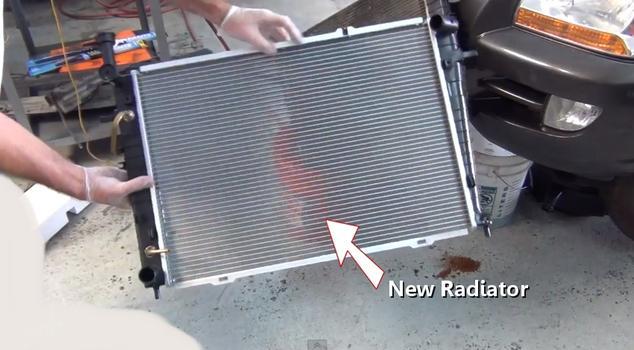Hi and welcome to 2carpros.com.
I suspect that either the temp sensor is bad or you have a short to power. First, I would suggest checking the wiring to the sensor. If all appears good as well as the connector, then I suspect the sensor is bad.
Here are the directions for replacing the sensor. The two attached pictures are related to these directions and show location.
_________________________
303-14A Electronic Engine Controls - 2.3L EcoBoost (231kW/314PS) 2016 Mustang
Removal and Installation
Cylinder Head Temperature (CHT) Sensor
Base Part Number: 6G004
Removal
Remove the nuts and the engine appearance cover.
Torque : 80 lb.in (9 Nm)
imageOpen In New TabZoom/Print
Slide the insulator up and disconnect the CHT sensor electrical connector.
Remove and discard the CHT sensor.
Torque : 97 lb.in (11 Nm)
Installation
To install, reverse the removal procedure.
_____________________________________________
Once you remove the sensor, here are the directions for testing the sensor and wiring. It will require basic knowledge of using a multi-meter. The remaining pics correlate with these directions starting with number 3.
____________________________________________
DX: ENGINE COOLANT TEMPERATURE (ECT) SENSOR: INTRODUCTION
DX: Engine Coolant Temperature (ECT) Sensor Introduction
DX: Pinpoint Tests See: Computers and Control Systems > Diagnostic Trouble Code Tests and Associated Procedures > DX: Engine Coolant Temperature (ECT) Sensor - Pinpoint Test
Note:Engine coolant temperature must be greater than 10°C (50°F) to pass the KOEO self-test and greater than 82°C (180°F) to pass the KOER self-test.
This pinpoint test is intended to diagnose the following:
- ECT sensor (12A648)
- harness circuits: ECT and SIGRTN
- powertrain control module (PCM) (12A650)
Voltage values calculated for VREF equals 5 volts. These values may vary by 15% due to sensor and VREF variations.
TEMPERATURE SENSOR VOLTAGE AND RESISTANCE SPECIFICATIONS
Engine Coolant Temperature (ECT) Sensor Connector
Powertrain Control Module (PCM) Connector
For PCM connector views or reference values, refer to Section 6 See: Computers and Control Systems > Diagnostic Trouble Code Tests and Associated Procedures > SECTION 6: Reference Values , Reference Values.
______________________________
I don't know if you need them, but here are a couple links explaining how to use a multi meter and wiring testing.
https://www.2carpros.com/articles/how-to-use-a-voltmeter
https://www.2carpros.com/articles/how-to-check-wiring
Let me know if this helps or if you have other questions.
Take care,
Joe
Images (Click to make bigger)
Thursday, December 13th, 2018 AT 8:05 PM









